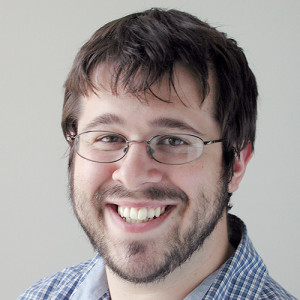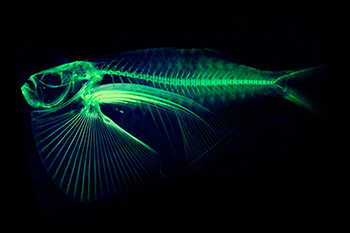Fishermen look at fish in a lot of different ways. You see them in the water, in your nets and on your dinner plates. You might know your favorite fish inside and out, but University of Washington biology professor Adam Summers wants to take a look at them at an angle most people don’t have access to.
A scan of the Thoracocarax stellatus species of fish is shown, with color added by computer to enhance the rendering of the structure of the bones. Adam Summers image.Summers, who works in the university’s School of Aquatic and Fisheries Sciences, is working to create one of the largest clearinghouses of fish computed tomography scans in the world. In layman's terms, he uses a special scanner that meshes together X-rays from different angles into a 3D image, giving him a clearer picture of the creature’s internal structure.
Summers has worked with fish for a long time but just started this project in the spring. And boy, is it an ambitious one. The professor is setting out to scan and digitize all 25,000 to 33,000 fish species on Earth. He’s using the scan information to help his biomechanics research.
"I've always been a fish guy," he told National Public Radio. "It's just been in my blood since I was as small as I can remember." That’s not a front. He was a scientific consultant on animated blockbusters "Finding Nemo" and "Finding Dory." Instead of the typical firstname.lastname email address, his university username is simply “fishguy.”
The science behind the work is pretty complex. You can dive into that with a simple Google search of his name. What you really need to check out are the artful scans he’s created by adding dyes to specimens.







